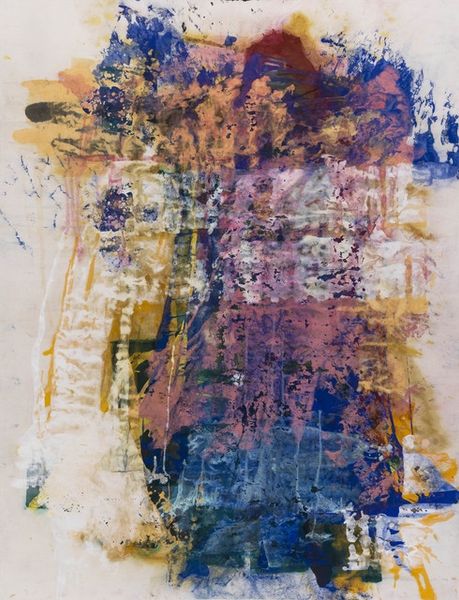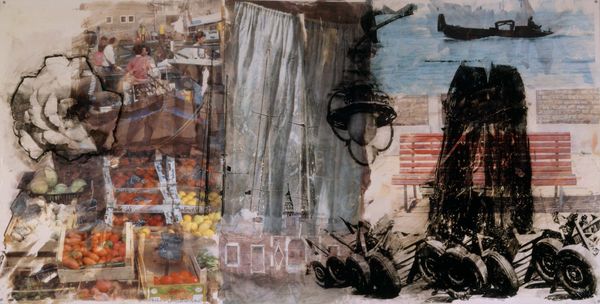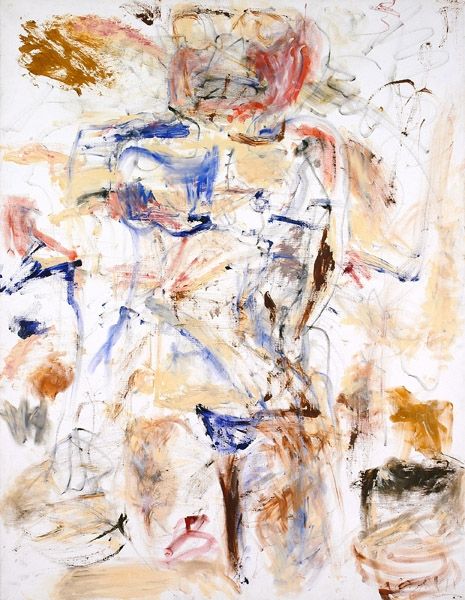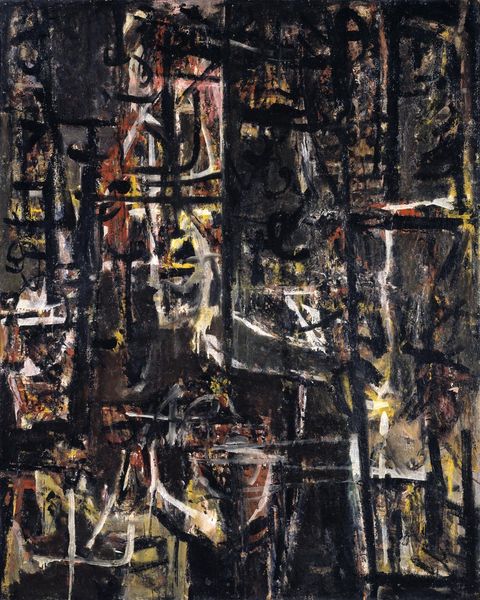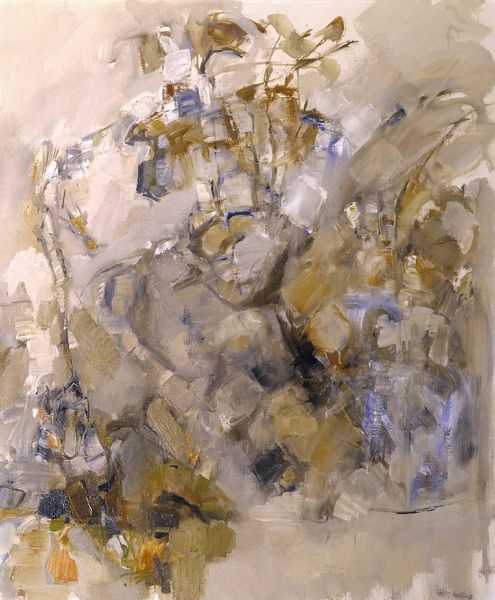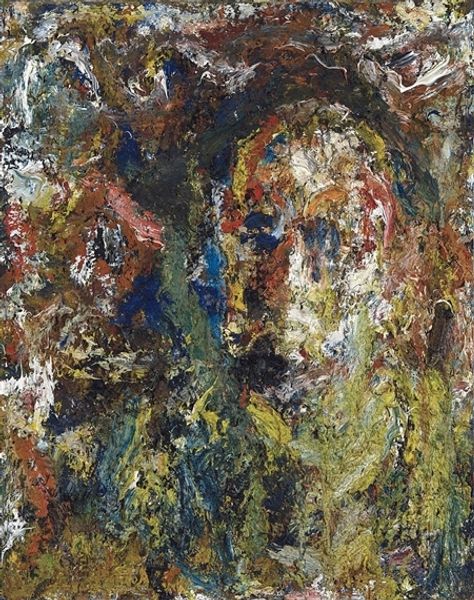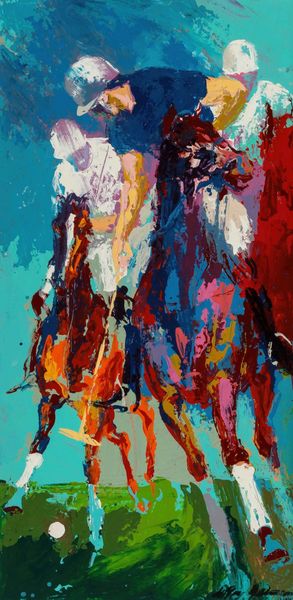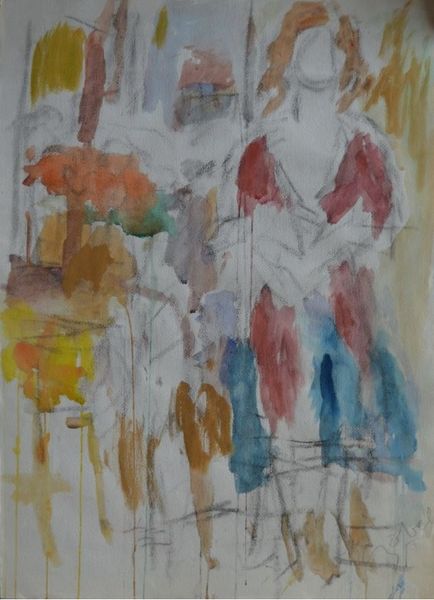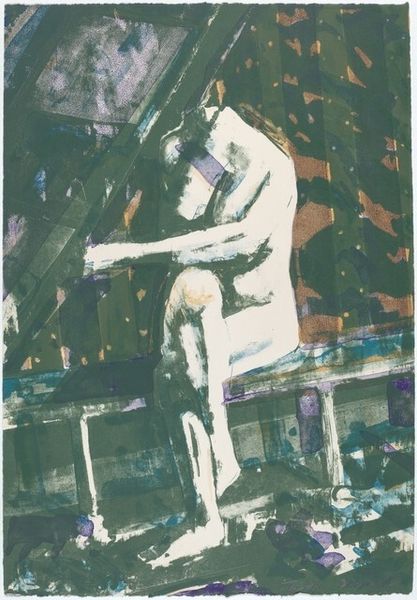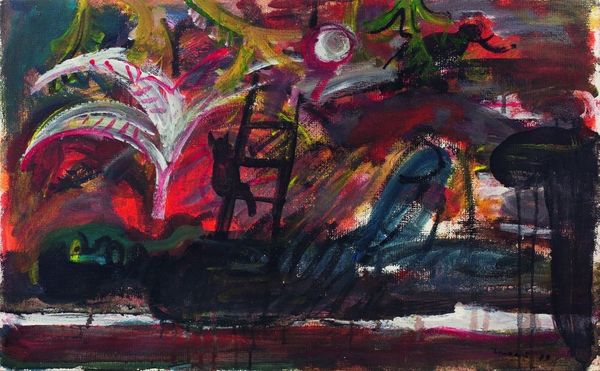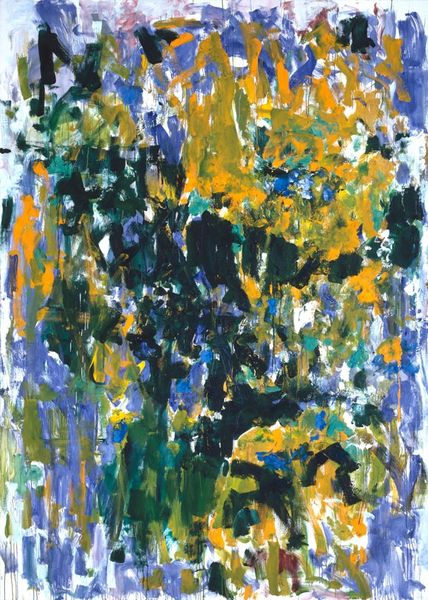
Woman and Panther (Salome and the Panther) 1880
0:00
0:00
gustavemoreau
Musée National Gustave Moreau, Paris, France
painting, watercolor
#
portrait
#
tree
#
animal
#
painting
#
figuration
#
watercolor
#
orientalism
#
france
#
symbolism
#
watercolor
#
erotic-art
Copyright: Public domain
Curator: Let’s take a look at Gustave Moreau's "Woman and Panther", also known as "Salome and the Panther", a watercolor painting dating back to 1880, currently housed in the Musée National Gustave Moreau in Paris. Editor: What strikes me immediately is its spectral quality. The muted colors and almost vaporous forms give it a dreamlike feel. There's an ethereal quality to the entire composition, which somehow captures a mood of subdued tension. Curator: Absolutely. And note Moreau’s meticulous craftsmanship. While seemingly spontaneous, the washes of watercolor are precisely placed, creating depth and a rich, complex surface. Consider the cost of imported pigments, their acquisition, and their role in conveying opulence and exoticism, which aligns with the Orientalist aesthetic prevalent at the time. Editor: The rendering of the woman is intriguing. The composition, almost vertically oriented, focuses your eye towards the female figure and hints at the panther with patches of dark colors at the base. It challenges conventional portraiture, as much of her features remain obscured. Her figure seems partially dissolving, blending into the environment as if she were a phantom. Curator: Indeed. Moreau, deeply inspired by myth and literature, often portrayed Salome as a figure of fatal beauty and decadent power. This ties into the broader social context, reflecting the era's fascination with femme fatales. Editor: Symbolically, the panther adds another layer. Panthers are powerful, enigmatic creatures and also products that get shipped from one colony to another. It is an excellent study in complementary color theory; the artist knew very well what would produce the ultimate drama. Curator: Consider the use of watercolor itself. Unlike oil paints that build up opacity, watercolors allow for layering and transparency. This would facilitate the ethereal quality you were talking about at the beginning. Editor: This has been helpful in articulating this image; its effect will linger. Curator: The piece exemplifies the beauty that art can still offer when we allow ourselves to examine what we can only just make out from it.
Comments
No comments
Be the first to comment and join the conversation on the ultimate creative platform.
